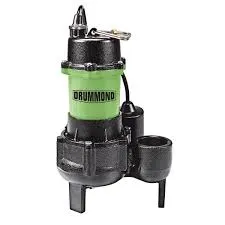English
- Afrikaans
- Albanian
- Amharic
- Arabic
- Armenian
- Azerbaijani
- Basque
- Belarusian
- Bengali
- Bosnian
- Bulgarian
- Catalan
- Cebuano
- Corsican
- Croatian
- Czech
- Danish
- Dutch
- English
- Esperanto
- Estonian
- Finnish
- French
- Frisian
- Galician
- Georgian
- German
- Greek
- Gujarati
- Haitian Creole
- hausa
- hawaiian
- Hebrew
- Hindi
- Miao
- Hungarian
- Icelandic
- igbo
- Indonesian
- irish
- Italian
- Japanese
- Javanese
- Kannada
- kazakh
- Khmer
- Rwandese
- Korean
- Kurdish
- Kyrgyz
- Lao
- Latin
- Latvian
- Lithuanian
- Luxembourgish
- Macedonian
- Malgashi
- Malay
- Malayalam
- Maltese
- Maori
- Marathi
- Mongolian
- Myanmar
- Nepali
- Norwegian
- Norwegian
- Occitan
- Pashto
- Persian
- Polish
- Portuguese
- Punjabi
- Romanian
- Russian
- Samoan
- Scottish Gaelic
- Serbian
- Sesotho
- Shona
- Sindhi
- Sinhala
- Slovak
- Slovenian
- Somali
- Spanish
- Sundanese
- Swahili
- Swedish
- Tagalog
- Tajik
- Tamil
- Tatar
- Telugu
- Thai
- Turkish
- Turkmen
- Ukrainian
- Urdu
- Uighur
- Uzbek
- Vietnamese
- Welsh
- Bantu
- Yiddish
- Yoruba
- Zulu
Telephone: +86 13120555503
Email: frank@cypump.com
Sep . 01, 2024 13:33 Back to list
basement sewer ejector pump
Understanding Basement Sewer Ejector Pumps A Comprehensive Guide
Basement sewer ejector pumps are crucial devices for many homeowners, especially those whose basements are below the municipal sewer line. When gravity alone cannot facilitate proper drainage, these pumps come into play to ensure that wastewater is efficiently removed from the basement area. In this article, we will delve into the workings, benefits, and maintenance of basement sewer ejector pumps.
How Ejector Pumps Work
Ejector pumps, also known as sewage pumps, are designed to handle the drainage of wastewater and effluent from areas that are lower than the main sewer line. When wastewater collects in a sump basin, the ejector pump activates and begins its operation. Unlike standard sump pumps, which remove stormwater or groundwater, sewage pumps are built to handle solids and thicker liquids.
The operation begins when the water level in the sump basin rises. Float switches or pressure sensors detect this increase and signal the pump to start. The pump uses a motor to spin an impeller, which creates pressure that pushes the sewage through a discharge pipe and into the main sewage line. Some ejector pumps are also equipped with a grinder feature, which pulverizes solid waste into smaller particles, making it easier to pump.
Benefits of Basement Sewer Ejector Pumps
Installing a basement sewer ejector pump offers several benefits for homeowners. Firstly, it prevents sewage backups, which can cause significant damage to your property and create an unsanitary living environment. By ensuring wastewater is effectively removed, these pumps help maintain a healthy basement.
Additionally, ejector pumps can provide greater versatility in using your basement space. With the ability to install bathrooms, laundry rooms, or other plumbing fixtures below the main sewer line, homeowners can expand their living areas without worrying about drainage issues. This added utility can enhance property value and improve quality of life.
Cost-efficiency is another advantage
. While the initial installation might seem like a significant investment, the prevention of catastrophic sewer backups or flooding can save homeowners thousands in repairs and cleanup costs.basement sewer ejector pump

Maintenance Tips for Longevity
To ensure that your basement sewer ejector pump operates efficiently for years to come, regular maintenance is essential. Here are some tips
1. Regular Inspections Inspect your pump quarterly to ensure all components are functioning. Look for any signs of wear or damage.
2. Cleaning the Sump Basin Clear out any debris or buildup in the sump basin that could obstruct the pump's operation.
3. Testing the System Periodically test the pump by pouring water into the basin to make sure it activates and pumps water out effectively.
4. Check the Power Supply Make sure that the pump is plugged in and that the circuit breaker is functioning. Consider having a backup generator in place to keep the pump operational during power outages.
5. Professional Maintenance Schedule a professional inspection every few years to ensure everything is in top condition.
Conclusion
Basement sewer ejector pumps are invaluable for homeowners with below-sewer-level basements. Not only do they keep your property safe from sewage backups, but they also provide options for enhancing your basement's utility. With proper maintenance, these pumps can serve you effectively for many years, contributing to a healthier and more functional home environment. Investing in a quality ejector pump can be essential for peace of mind and the protection of your property.
-
ISG Series Vertical Pipeline Pump - Chi Yuan Pumps Co., LTD.|High Efficiency, Energy Conservation, Low Noise
NewsJul.29,2025
-
ISG Series Vertical Pipeline Pump-Chi Yuan Pumps Co., LTD.|High Efficiency&Energy-Saving
NewsJul.29,2025
-
ISG Series Vertical Pipeline Pump - Chi Yuan Pumps Co., LTD. | High Efficiency, Energy-Saving
NewsJul.29,2025
-
ISG Series Pipeline Pump - Chi Yuan Pumps | High Efficiency, Low Noise
NewsJul.29,2025
-
High-Efficiency Vertical Slurry Pumps for Mining & Industry Solutions
NewsJul.29,2025
-
High-Efficiency Pipeline Pump Solutions for Every Pipeline Pump Station
NewsJul.29,2025










